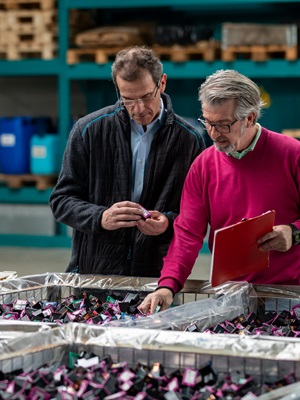With supply chains accounting for more than 90% of an organization’s greenhouse gas emissions, there has been an increasing focus on sustainability initiatives in this area.
The process of building a sustainable supply chain involves mapping the entire workflow and integrating sustainable practices to decrease carbon footprints. By leveraging the power of automation, core processes such as inventory management, logistics, and waste management can be streamlined, increasing efficiency for a higher ROI while reducing environmental impact.
In this article, we’ll delve deeper into the importance of sustainability in supply chains and the different ways companies use automation technologies to enable more sustainable practices.
The Growing Focus on Sustainable Supply Chains
The recent Global Sustainability Study by the global strategy and pricing consultancy Simon-Kucher & Partners revealed that 85% of people feel that their purchase behaviour has shifted towards being more sustainable in the last five years. Furthermore, 34% are willing to pay more for sustainable products or services.
As consumers become more conscious of the environmental impact of their shopping habits, there has also been a paradigm shift in the sustainability mindset of businesses in recent years. With companies poised to face up to US$120 billion in costs from environmental risks in their supply chain, it makes even more economic sense to adopt operational measures to drive sustainability in this area.
Harnessing the Power of Automation for Efficiency and Sustainability
Here are the ways leading organisations leverage automation to enhance efficiency while adopting greener practices across their supply chain.
Route Optimisation
With 37% of CO2 emissions coming from logistics transportation, optimising routes can reduce a company’s carbon footprint by lessening the time delivery vehicles spend on the road, air or water.
One example is IBM’s Supply Chain Insights platform, which analyses traffic, weather and other factors in real time to determine the best shipping routes in terms of cost and environmental impact. Additionally, Walmart automates its inventory management through AI, enabling more efficient shipping across its 4,700 facilities.
Efficient Scaling of Production
As demand for consumer goods fluctuates, manufacturers aim for more dynamic production. Through machine learning, massive historical data can be analysed and used to design production lines that adjust to changes in demand.
AI-enabled IoT devices are also being installed in manufacturing equipment to predict potential disruptions in production. Recently, PepsiCo analyzed over 300 million machine hours to develop algorithms that can recognise patterns of malfunction and deploy preventive measures. By saving time and repair costs, this boosts value chain efficiency.
Reducing Waste
Approximately $163 billion worth of goods is being thrown away every year due to damage or oversupply. Improper disposal leads to soil and water contamination, air pollution, and other detrimental effects on the environment.
Through IoT sensors, suppliers can gain real-time insights at every stage of the process. This allows them to manage waste more efficiently.
For instance, delivery trucks equipped with interconnected devices and analytics can monitor the status of perishable goods based on a preset scale. When a shipment is delayed and products reach a predetermined limit, sensors will notify suppliers so they can reroute the shipment to a closer sorting facility. This helps suppliers minimise waste and save costs.
Automation of Processes
Human errors in supply chain can negatively impact the environment. For instance, if an online retailer delivers the wrong product due to a clerical mistake, shipping the correct item means increased carbon emissions and energy consumption. Such manual errors are less likely to happen when processes are automated.
Workflow automation can provide more accurate data for strategic decision-making while reducing costs by up to 90%. Furthermore, it boosts productivity by allowing teams to move away from manual busywork and focus on higher-level tasks.
Carbon-Neutral Transportation
Experts estimate that by 2030, there will be 36% more delivery vehicles on the road worldwide, adding roughly 6 million metric tonnes of carbon dioxide (CO2) emissions. Automating deliveries through electric self-driving trucks instead of using diesel vehicles can reduce carbon emissions by over 63%.
While autonomous vehicles are not yet mainstream, self-driving trucks may be seen in California this year. In the meantime, delivery robots and drones could be a more practical choice. According to research, integrating them into an existing supply chain can result in a 90% reduction in energy consumption per package compared to other vehicles.
Energy-Saving Technology Integrations
Energy production and consumption across the supply chain directly lead to environmental issues such as air pollution and water and soil contamination.
Through automation, businesses can improve energy management. AI-powered smart sensors can track energy usage and regulate it to improve equipment scheduling. The data gathered by these sensors can also be analysed to identify and address inefficiencies and guarantee peak performance.
Joining the Sustainability Movement
Consumers play an equally crucial role in maintaining supply chains that are environmentally responsible. For example, one can lessen their impact on the environment by driving fewer miles when they purchase locally and sustainably sourced goods. Hence, to keep supply chain sustainability at the forefront of buying decisions, it’s important to educate consumers and spark conversations about it.
Strategic partnerships are always beneficial to the environment when they’re used to enhance eco-consciousness. The manufacturing, warehousing, and distribution industries are undergoing an ESG-focused transformation, and businesses will benefit from exploring automation options to support their sustainability efforts, stay ahead of the competition and grow rapidly.
Posted 31/07/2024

















